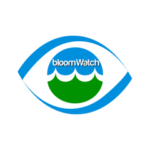Snapshot of Health
A visual snapshot of the health of Lake Winnipesaukee can be found on the Water Quality Monitoring StoryMap. The storymap provides an introduction and overview of the monitoring efforts on Lake Winnipesaukee. The map allows the user to view the lake as a whole and choose which parameter (Total Phosphorus, Chlorophyll-a, water clarity) to display.
Individual sampling sites can be clicked on, and a pop-up window will open to provide a snapshot of the data for that site.
View the DataWeekly Reports & Observations
The Report Card and Winni Bloom Watch Map page provides an interactive map with cyanobacteria sightings, information on how to report a bloom, and a summary of key information that may influence cyanobacteria growth.
State and local officials can’t be watching every lake at all times. By using the bloomWatch app on your smartphone, you will help scientists understand where and when algal blooms occur and may be causing issues. No training is necessary – if you see a green scum, clump, flakes or filaments, you simply take a picture, fill in some basic information and upload it to the web. The information is sent to cyanos.org and NHDES and allows scientists to to build regional perspectives and identify trends in cyanobacteria occurrences across New England.
View the Weekly Report and Cyanobacteria MapLake Reports Now Online
Want to understand the water quality data for Lake Winnipesaukee in more depth? For those lakes in the University of New Hampshire’s Lakes Lay Monitoring Program, results from each year’s sampling are now online.
The reports provide a summary of water quality for specific areas of Winnipesaukee based on measurements of total phosphorus, Chlorophyll-a, and water clarity. All of Winnipesaukee’s reports are not yet available, but will be uploaded as completed.
View the Lake Reports